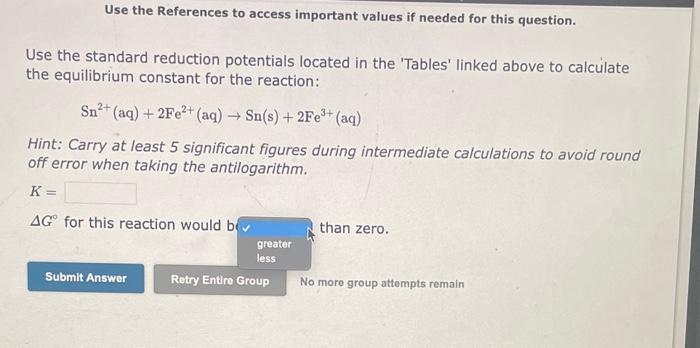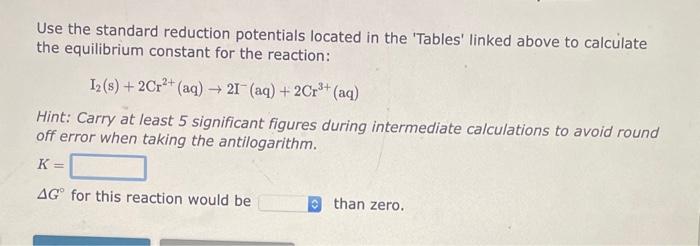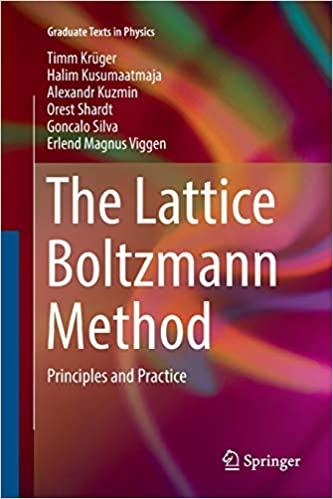Answered step by step
Verified Expert Solution
Question
1 Approved Answer
i need help for the three questions Use the standard reduction potentials located in the 'Tables' linked above to calculate the equilibrium constant for the
i need help for the three questions 


Use the standard reduction potentials located in the 'Tables' linked above to calculate the equilibrium constant for the reaction: Sn2+(aq)+2Fe2+(aq)Sn(s)+2Fe3+(aq) Hint: Carry at least 5 significant figures during intermediate calculations to avoid round off error when taking the antilogarithm. K= G for this reaction would b than zero. No more group attempts remain Use the standard reduction potentials located in the 'Tables' linked above to calculate the equilibrium constant for the reaction: 2Ag+(aq)+Ni(s)2Ag(s)+Ni2+(aq) Hint: Carry at least 5 significant figures during intermediate calculations to avoid round off error when taking the antilogarithm. K= G for this reaction would be than zero. Use the standard reduction potentials located in the 'Tables' linked above to calculate the equilibrium constant for the reaction: I2(s)+2Cr2+(aq)2I(aq)+2Cr3+(aq) Hint: Carry at least 5 significant figures during intermediate calculations to avoid round off error when taking the antilogarithm. K= G for this reaction would be than zero. Use the standard reduction potentials located in the 'Tables' linked above to calculate the equilibrium constant for the reaction: Sn2+(aq)+2Fe2+(aq)Sn(s)+2Fe3+(aq) Hint: Carry at least 5 significant figures during intermediate calculations to avoid round off error when taking the antilogarithm. K= G for this reaction would b than zero. No more group attempts remain Use the standard reduction potentials located in the 'Tables' linked above to calculate the equilibrium constant for the reaction: 2Ag+(aq)+Ni(s)2Ag(s)+Ni2+(aq) Hint: Carry at least 5 significant figures during intermediate calculations to avoid round off error when taking the antilogarithm. K= G for this reaction would be than zero. Use the standard reduction potentials located in the 'Tables' linked above to calculate the equilibrium constant for the reaction: I2(s)+2Cr2+(aq)2I(aq)+2Cr3+(aq) Hint: Carry at least 5 significant figures during intermediate calculations to avoid round off error when taking the antilogarithm. K= G for this reaction would be than zero 


Step by Step Solution
There are 3 Steps involved in it
Step: 1

Get Instant Access to Expert-Tailored Solutions
See step-by-step solutions with expert insights and AI powered tools for academic success
Step: 2

Step: 3

Ace Your Homework with AI
Get the answers you need in no time with our AI-driven, step-by-step assistance
Get Started


